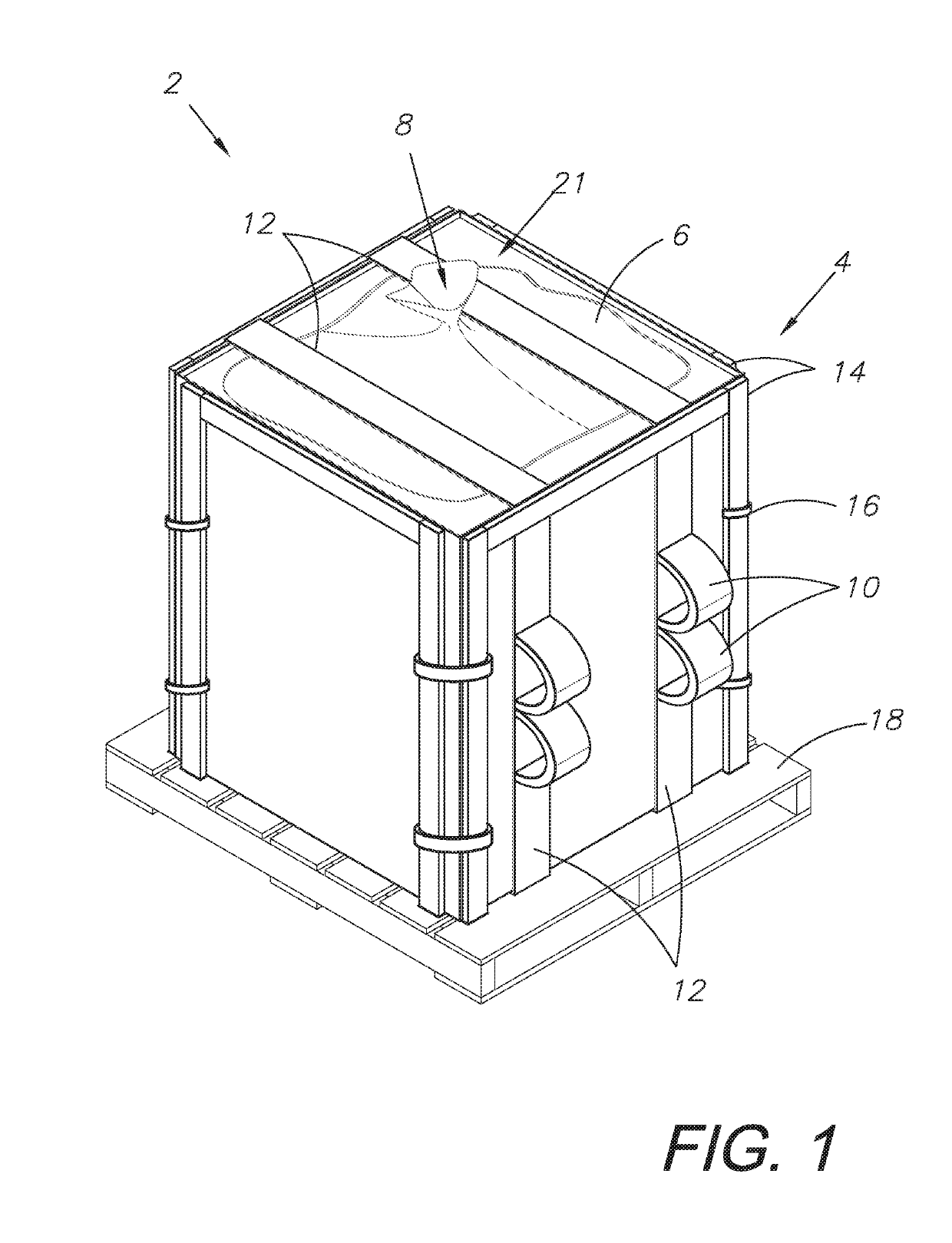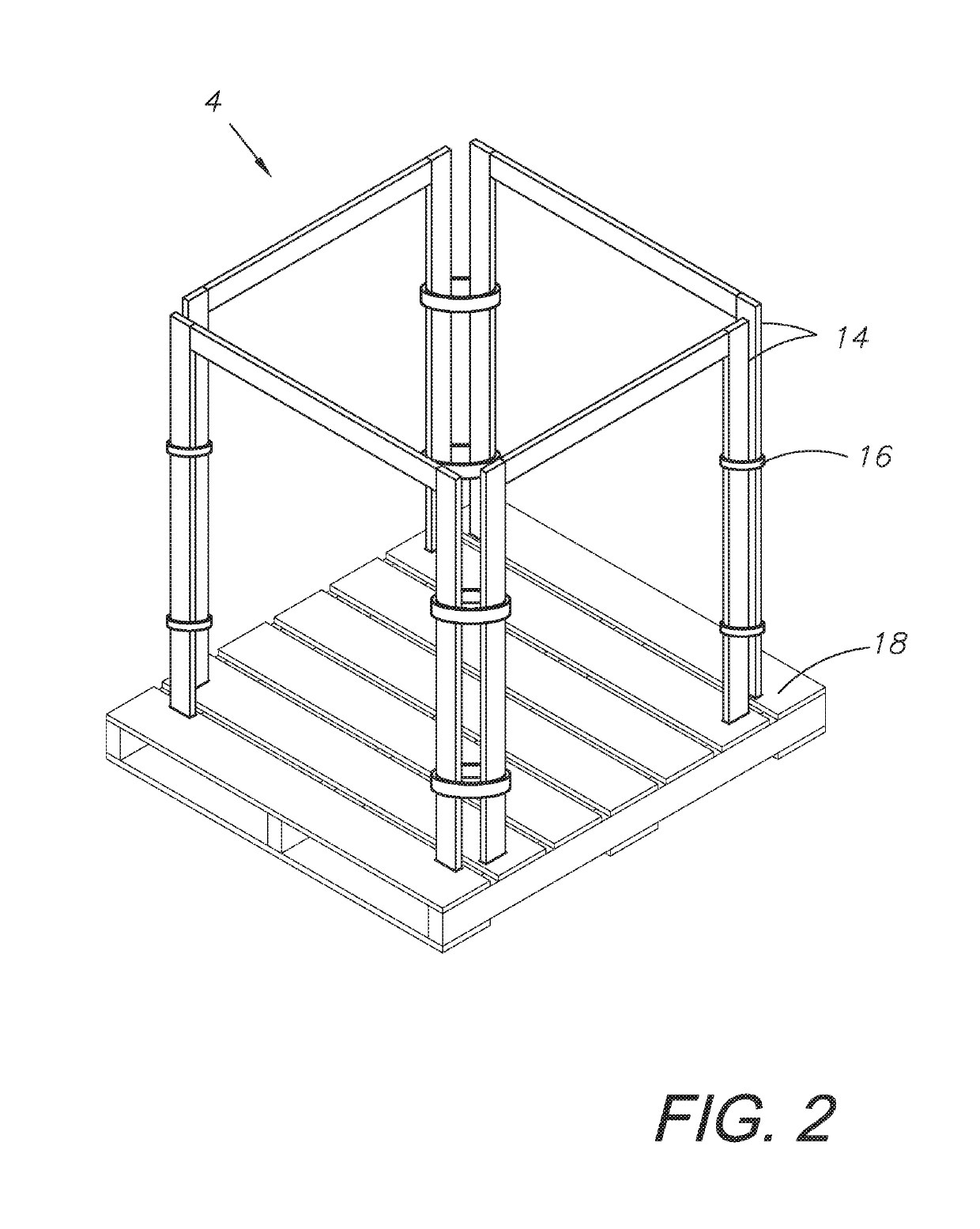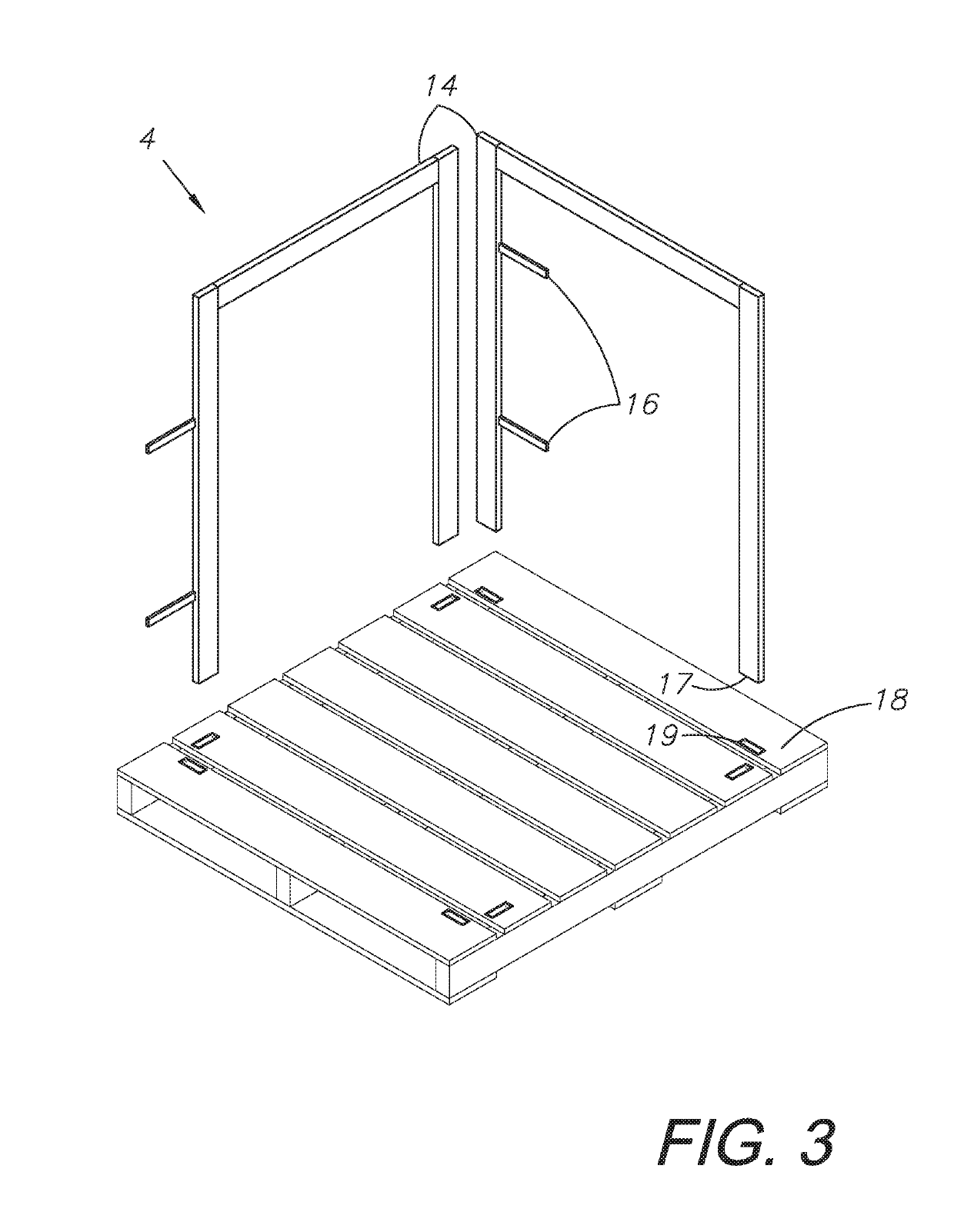Lightweight transport, storage and delivery system
a transportation, storage and delivery system technology, applied in the field of transportation systems, can solve the problems of difficult to effectively transport the proppant to the desired location, and large amount of such proppant, and achieve the effect of easy engagement and lifting of the fib
- Summary
- Abstract
- Description
- Claims
- Application Information
AI Technical Summary
Benefits of technology
Problems solved by technology
Method used
Image
Examples
first embodiment
[0059]FIGS. 8 and 9 show another alternative embodiment proppant container system 102 which contains a similar enclosure to the first embodiment described above. However, these show a frame 104 which does not insert into the pallet 118. Otherwise, the frame and container 6 could be identical to that embodiment.
[0060]As before, the rigid frame 104 is built about the container 6 to secure it for transport and to prevent damage to the container. The frame consists of side frame members 114 which enclose the container 6. The container 6 is accessible via a top opening 121 of the frame 104. Straps 116 connect the side frame members 114 together. The same lifting loops 10 and straps 12 can be used in this embodiment.
[0061]A cover 130 can be secured about the top opening 121 of the frame 104. This cover 130 would protect the container 6 within the frame 114. It could be secured to the frame 104 using tie downs, clasps, a large elastic band, or other suitable devices.
V. Alternative Embodime...
embodiment 302
[0073]Similar to the embodiment 302 above, FIG. 15 shows an alternative embodiment proppant container system 402 where the container 406 includes a spout 404 for filling and emptying the container. The spout may be an excess portion of the container 406 material itself which simply extends outwards and upwards from the container, or it may be a physical element which is placed around the opening 408 of the container. A spout clamp 418, which may be a tie, proprietary clamp, or other closure device, cinches the spout closed or otherwise seals the spout until the container system 402 is in position to be emptied.
[0074]The container may include markings 407 which indicate the weight of the container based on how full the container 406 is. The weight may be written or printed around these markings 407, or may be in a reference manual separate from the container system 402. The numbers could indicate by sand weight by volume (e.g. 2, 4, 6, 8, 10, 12, and 13) in thousands of pounds or kil...
PUM
 Login to View More
Login to View More Abstract
Description
Claims
Application Information
 Login to View More
Login to View More - R&D
- Intellectual Property
- Life Sciences
- Materials
- Tech Scout
- Unparalleled Data Quality
- Higher Quality Content
- 60% Fewer Hallucinations
Browse by: Latest US Patents, China's latest patents, Technical Efficacy Thesaurus, Application Domain, Technology Topic, Popular Technical Reports.
© 2025 PatSnap. All rights reserved.Legal|Privacy policy|Modern Slavery Act Transparency Statement|Sitemap|About US| Contact US: help@patsnap.com



